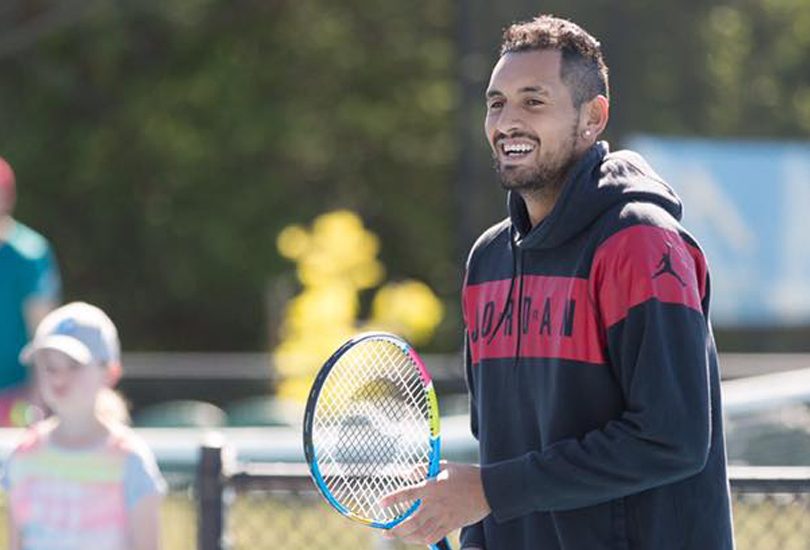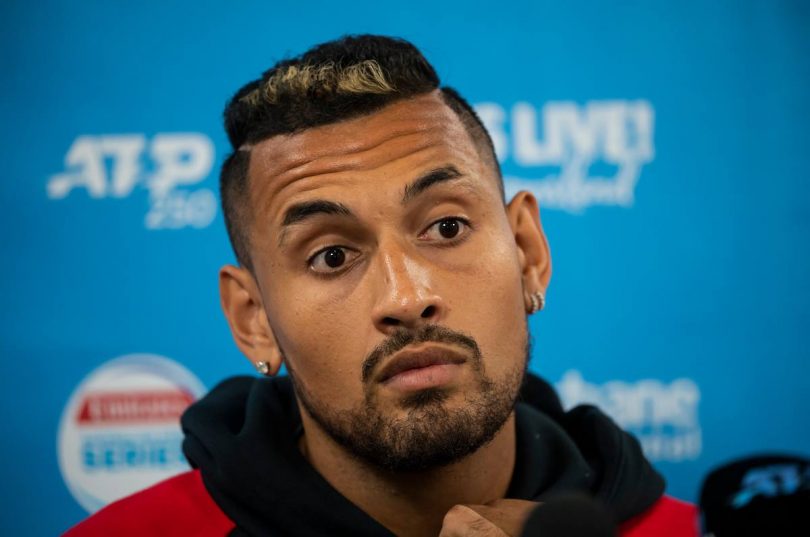
Compelling and entertaining, Nick Kyrgios. Photo: Tennis ACT.
The sight of fans queuing to watch a second-round doubles match along with television ratings going through the roof is surely evidence enough that a tennis revolution is taking place.
Nick Kyrgios, as the band-leader in his doubles combination with Thanasi Kokkinakis, has almost single-handedly pulled tennis into the mass entertainment market at the Australian Open.
Chest pumps, laps of honour, fans drinking from shoes … it is more akin to a mosh pit than the normally demure setting of a Grand Slam doubles match.
I must admit that normally I would not be drawn to watch doubles, but I couldn’t help but switch on the telly to see the Kyrgios-Kokkinakis combination in action.
Kyrgios, of course, has been heading down the path of being the number one entertainer on the tennis circuit for many years as a singles player.
The entertainment value has often been through watching him self-destruct on court. It’s the ultimate in ‘fly on the wall’ reality television.
He’s not the first to take on tennis in this way. Who could forget John McEnroe? He, too, had the capacity to self-combust, making for uncomfortable but compelling viewing.
But Kyrgios’s doubles combination with Kokkinakis is different. There is a greater sense of enjoyment but with a similar foundation of entertainment as the central theme.
Mind you, not everybody is on-board, as was evident in the post-match interview with his second round singles opponent Daniil Medvedev who protested about the behaviour of the crowd. At times the crowd’s jeers resembled the response from the masses to ancient Roman gladiatorial munera at the Colosseum.
You would imagine there are many with the mindset of Medvedev who are more accustomed to the time-honoured traditions of the game of tennis, including a silent and polite crowd.
Sport is facing an interesting period in which it is becoming harder to get people to events, given the television coverage and COVID restrictions.
Ash Barty aside, and it’s difficult not to be drawn in by her wonderful demeanour and talent, tennis, at times, can be robotic and devoid of personality.

Whatever you think of him, Nick Kyrgios has drawn a new audience to tennis. Nick Kyrgios at the Brisbane International 2019. Photo: File.
Kyrgios pointed out that tennis has done a poor job in accepting personalities in the past and had focused so much of its energy on marketing three players for the last decade – Federer, Nadal and Djokovic – and it has now caught up with them.
With his ranking currently around 115, Kyrgios has attracted as much attention over the past week as the likes of Nadal.
There have been times of frustration at his lack of application, particularly as he has a lot of obvious talent. But with this in mind, perhaps his real calling is as an entertainer.
There is a fine line, though, between tennis as entertainment, where games can resemble a rock concert, and the need to be fair and respectful of opponents and the game itself.
That said, I can’t wait for Wimbledon.

















